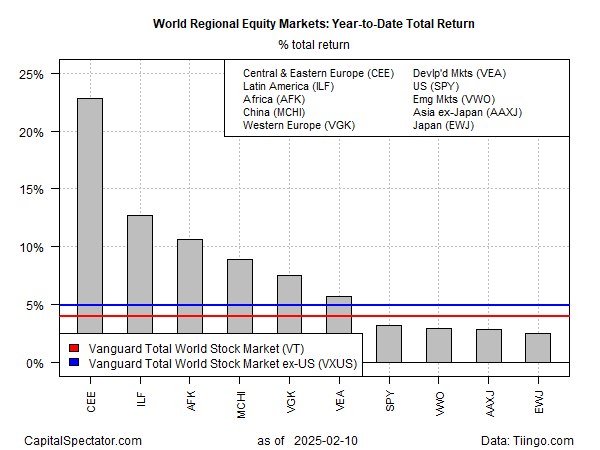After two straight calendar years of red-hot performance, American shares are experiencing a run of muted results on the global stage. All the major slices of world stock markets are posting gains so far in 2025, but a notable shift from recent history is a subdued rise in US stocks versus some of its foreign competition, based on a set of ETFs through Monday’s close (Feb. 10).
US equities are up 3.2% year to date via SPDR S&P 500 ETF (SPY). That’s a solid gain for such an early point in the year, at least by historical standards. But when measured in context with a number of foreign funds, it’s conspicuously modest.
The red-hot leader at the moment for 2025 is a closed-end fund that targets central and eastern European shares.
The Central and Eastern Europe Fund (CEE) has surged 22.8% so far this year. (There are no US-listed ETFs broadly focused on this region). Stocks in Latin America (ILF) are a distant second-place performer via a 12.7% gain.
Notably, the global equity market benchmark ex-US (VXUS) is up 4.9%, comfortably ahead of the 3.2% rise for US stocks (SPY).
The weakest performer this year: Japan stocks (EWJ), posting a 2.5% increase.
It’s still early in the year so the results to date should be viewed cautiously for guesstimating how 2025 will shape up. But after two straight years of foreign stocks trailing US shares by wide margins, advocates of international diversification are wondering if a degree of reversion to the mean is unfolding.
